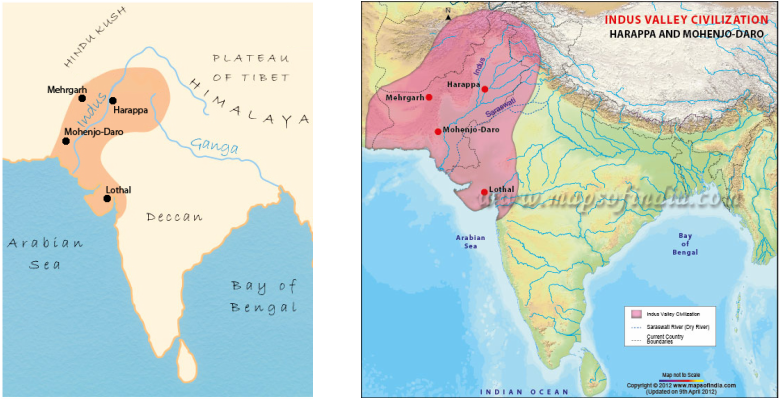
Underworld: Flooded Kingdoms of the Ice Age, A Vedic and India Perspective. The Indus Civilization: A Contemporary Perspective. Other figures in yoga postures, Shiva-like Gods, fire altars and swastikas may provide further evidence of the connection. A new study from the WHOI found evidence that climate change likely drove the Harappans to resettle far away from the floodplains of the Indus. While other scholars have purported that this figure is actually a “Proto-Brahma”/ “Brahma-Bull” (the great creator) or other god, the general consensus is that the figure is a precursor to later belief systems in India and beyond. The Ancient Indus Valley Civilization was thriving 4,000 years ago until a sudden migration led to its demise. A stone seal known as the “Proto-siva”, which depicts a male character sitting on a dias in a yogic position surrounded by animals, was thought by Marshall to be a forerunner of Shiva, the well-known Hindu deity. Many images found in Harappan sites are thought to be the predecessors to Vedic ideology. Also among the important depictions are the symbolic representation of the phallus (linga) and vulva (yoni), and the importance of bath and water in religious practice.

In 1931, John Marshall identified a number of prominent features of the Indus religion, namely the Great Mother Goddess (female sexuality is deeply ingrained in Indus religion and ideology), a Great Male God and veneration of animals.

That being said, the belief system of the Indus Valley people is important to consider because it is likely to have contained many precursors to deities and religious practices of religions that developed later in the region.ĭespite the fact that no temples have been found dating back to the Indus Valley Civilization, the religion is said to have believed in the otherworld as well as in gods and goddesses.

We are therefore left to speculate the belief system by ascribing meaning to the physical evidence left by the archaeological record, in order to understand the ideologies of these ancient people. Furthermore, the civilization left behind little physical evidence of their beliefs, and that evidence that has been unearthed is open to a wide range of interpretation. The exact belief system of the Indus Valley Civilization is difficult to define because the written language has not yet been deciphered, and there were no direct successors, nor colonialists, to interpret and record prevailing beliefs.


 0 kommentar(er)
0 kommentar(er)
